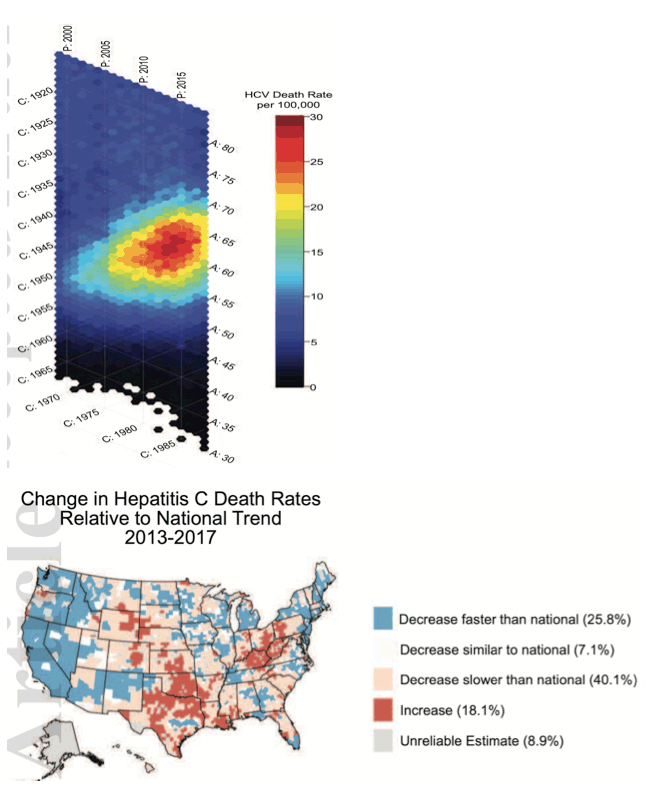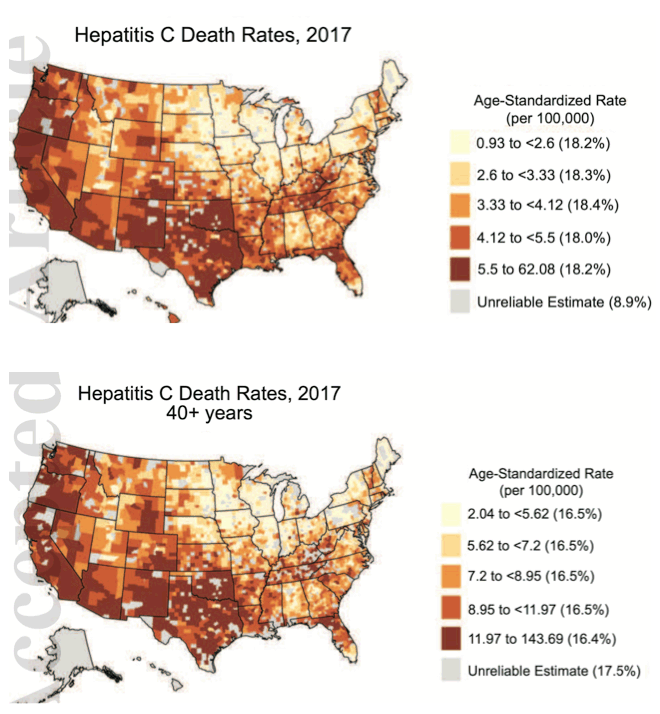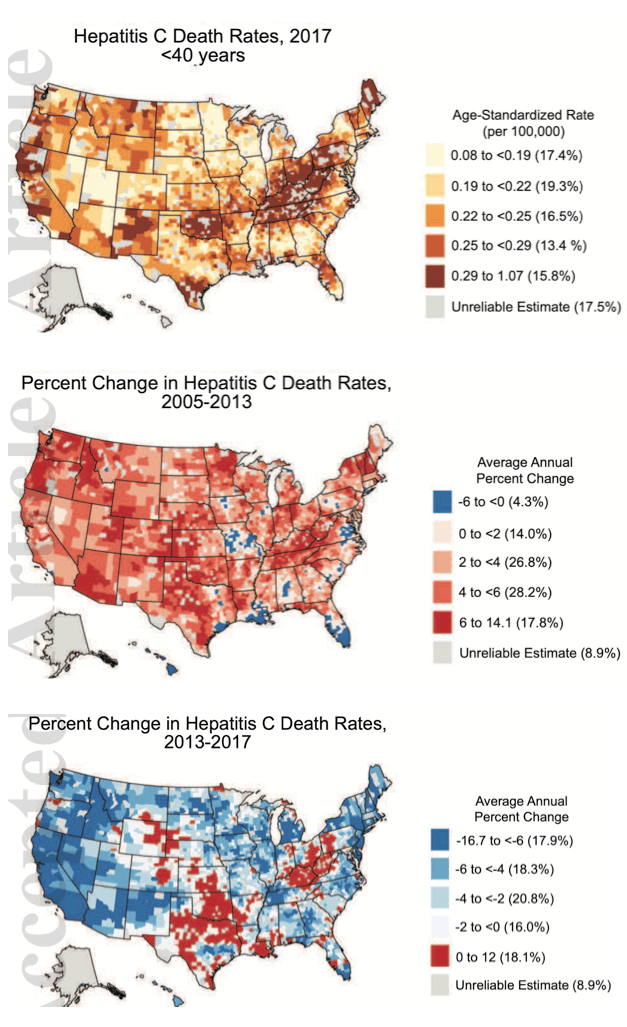| |
County‐Level Variation in Hepatitis C Virus Mortality and Trends in the United States, 2005‐2017
|
| |
| |
Download the PDF here
20 February 2021 Hepatology
Eric W. Hall , PhD, MPH; Sarah Schillie , MD, MPH, MBA; Adam S. Vaughan , PhD,141 MPH; Jeb Jones , PhD, MPH, MS; Heather Bradley , PhD, MHS; Ben Lopman , PhD, MS; Eli51 Rosenberg , PhD; Patrick Sullivan , DVM, PhD.
Abstract
Since 2013, the national HCV death rate has steadily declined, but this decline has not been quantified or described on a local level. We estimated county‐level HCV death rates and assessed trends in HCV mortality from 2005 to 2013 and 2013 to 2017. We used mortality data from National Vital Statistics Systems and a Bayesian multivariate space‐time conditional autoregressive model to estimate age‐standardized HCV death rates from 2005 through 2017 for 3115 U.S. counties. Additionally, we estimated county‐level age‐standardized rates for persons <40 and 40+ years of age. We used log‐linear regression models to estimate average annual percent change in HCV mortality during periods of interest and compared county‐level trends to national trends.
Nationally, the age‐adjusted HCV death rate peaked in 2013 at 5.20 HCV deaths per 100,000 (95% credible interval, CI: 5.12, 5.26) before decreasing to 4.34 per 100,000 persons (95% CI: 4.28, 4.41) in 2017 (average annual percent change ‐4.69, 95%CI: ‐5.01, ‐4.33).
County‐level rates revealed heterogeneity in HCV mortality (2017 median rate=3.66, interdecile range: 2.19, 6.77), with the highest rates concentrated in the West, Southwest, Appalachia and northern Florida. Between 2013 and 2017, HCV mortality decreased in 80.0% (n=2274) of all U.S. counties with a reliable trend estimate, with 25.8% (n=803) of all counties experiencing a decrease larger than the national decline.
Conclusion: Although many counties have experienced a shift in HCV mortality trends since 2013, the magnitude and composition of that shift have varied by place. These data provide a better understanding of geographic differences in HCV mortality and can be used by local jurisdictions to evaluate HCV mortality in their areas relative to surrounding areas and the nation.
For all years, the HCV death rate was much higher among adults 40+ years of age (9.77 per 100,000 in 2017; 95% CI: 9.65, 9.94) compared to persons <40 years of age (0.23 per 100,000, 95%CI: 0.22, 0.24).
Counties that had an increase in HCV mortality during this time frame were concentrated in Oklahoma, Texas and parts of Appalachia stretching from Kentucky up through western Pennsylvania.
Hepatitis C death rates have been declining since 2013, but the direction and magnitude of that trend is not consistent by place or age group. Efforts to continue the national decline in HCV mortality will require innovative approaches that increase access to testing and care for persons living with HCV infection, particularly in counties in which HCV death rates continue to remain high.
Figure 5 displays a hexamap of the estimated national HCV death rates per 100,000 persons to visualize age-period-cohort trends(28). The figure contains three axes representative of age (in single years), birth cohort and year. The highest HCV death rates are concentrated among persons born between 1945-1960.



| |
| |
| |
|
|
|